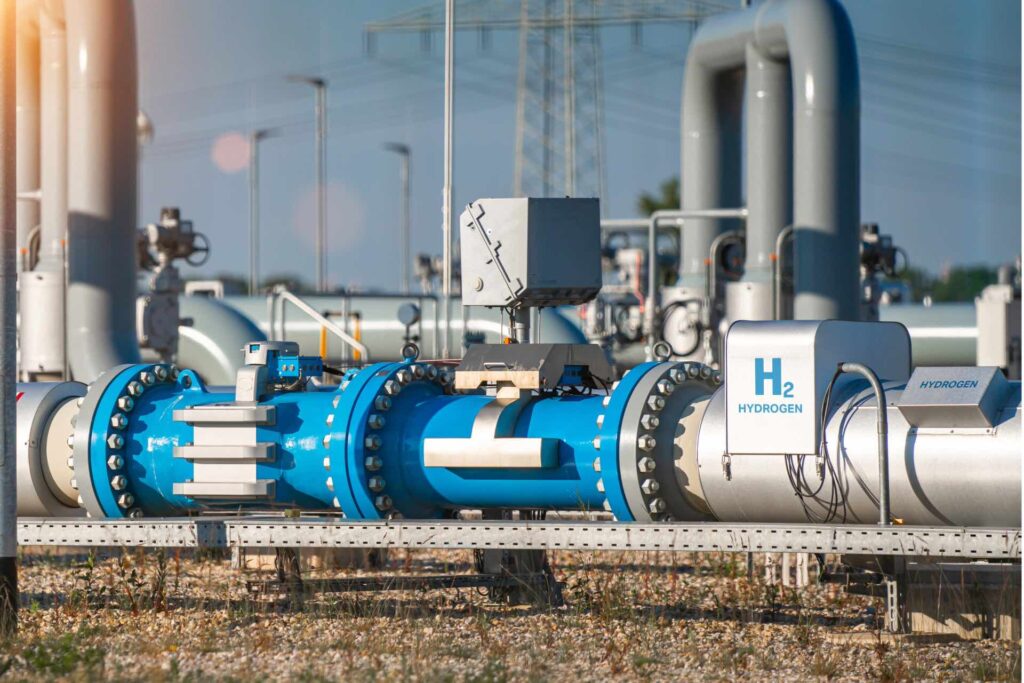Just before the Christmas break, the UK’s green hydrogen sector saw another defining moment as the Government released their December Hydrogen Package. Here’s a summary of what was announced and what it means as we look ahead into 2024.
An investable market
The Department for Energy and Net Zero (DESNZ) released a range of significant hydrogen policy announcements and publications, marking a shift in gear from the development of policy to the actual delivery of projects. Throughout the pages of detail released, there’s a clear headline message. That the UK hydrogen market is investible. With an agreed roadmap and strategy in place, all designed to give industry clarity and the sector a serious kick start.
Backing for 11 major electrolytic hydrogen projects
The new measures see £400M of private sector investment in 11 commercial scale projects across the UK. In a world first, the Hydrogen Allocation Round 1 (HAR1) , secured 125 megawatts (MW) of hydrogen capacity. The projects will receive an average strike price of £241/MWh over a period of 15 years, with exact subsidy depending on the natural gas price under a Contracts for Difference style scheme. Each contract provides developers with revenue guarantees for their projects. The projects will be the first of their kind, and as such, can act as blueprints for unlocking the potential of green hydrogen, helping industrial businesses to decarbonise.
Roadmap to 2035
Ministers also published a strategic roadmap which sets out the UK’s commitment to significantly ramp up a low carbon hydrogen economy between now and 2035. Ambition in the sector is building, and for the first time, included more on the breakdown of the 10GW by 2030 target into different technologies. The Government has stated an allocation of up to 6GW to electrolytic hydrogen and the remaining 4GW to CCUS enabled hydrogen.
Scaling up
The next round of support, HAR2, was also launched. This round seeks to award contracts for up to 875MW of projects, subject to affordability, value for money and quality of projects. This represents a significant scale up from the first round. There was also more clarity on the plan for future allocation rounds too, with details on timelines and size.
What will the green hydrogen be used for?
From Plymouth to Cromarty, the successful projects cover 8 regions across England, Scotland and Wales and aim to produce green hydrogen for different end uses. Several projects are part of regional ‘hubs’ which stand to provide a boost to local industry and transport by supplying green hydrogen. These could support decarbonisation efforts and achieve a significant reduction in industrial pollution. The facilities will enable industrial users to transition away from fossil fuels using green hydrogen produced from domestic renewable energy sources in diverse end use applications such as the manufacture of toilet roll and the distillation of whisky.
Paving the way
These new production projects represent the largest number of commercial scale green hydrogen projects announced at once anywhere in Europe. For an emerging industry, this is a great start. It is already providing the learning and experience needed to make green hydrogen work on a practical level. For both DESNZ and everyone involved in making these projects happen, it’s an opportunity to gain the insight and know how that can only come from actually contracting, funding and building this technology. Not only can this place the UK at the forefront of innovation in the nascent hydrogen industry, but also deliver much needed progress towards net zero ambitions.

